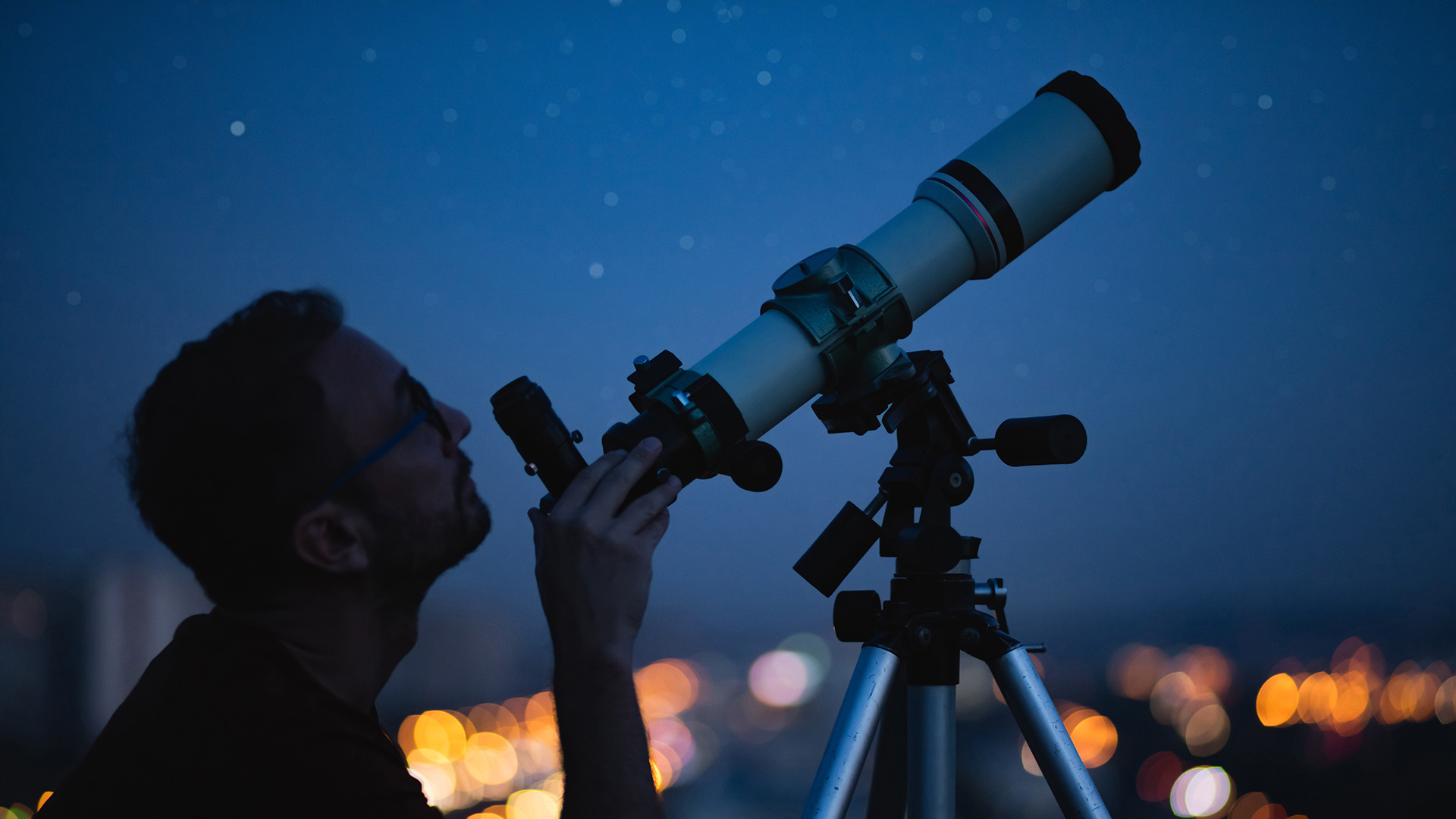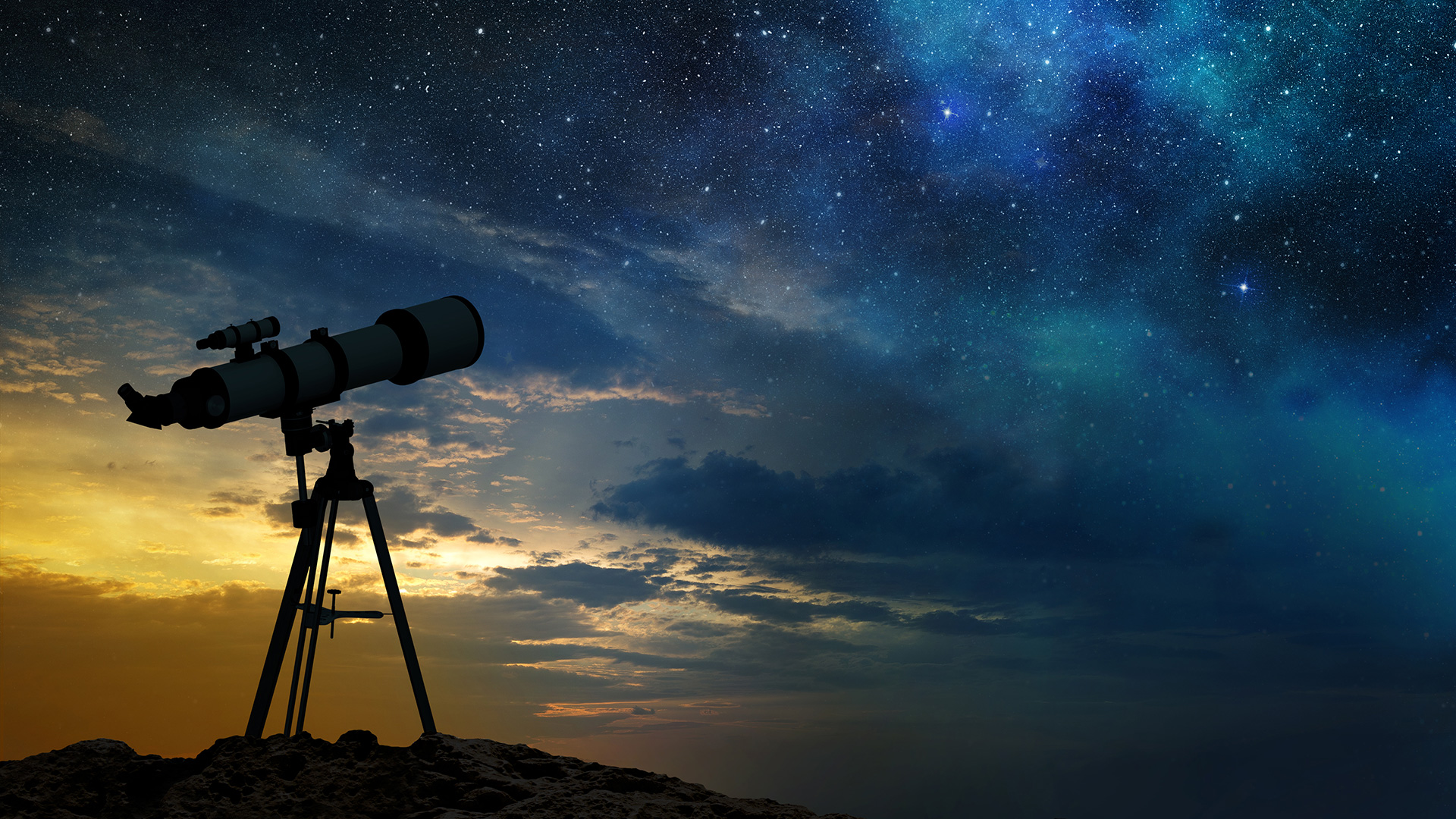What to aim your telescope at: your guide to exploring the night sky
From the Moon and planets to star clusters and nebulae, here's what to point a 3" or 4" telescope at from the Northern Hemisphere


Are you ready to take a closer look at the night sky? Let's say you've consulted our best telescope guide to make your purchase, and followed our advice on how to set it up. Now what? This article will help direct you on your journey through the stars, by walking you through the best star clusters, planets and nebulae to train your telescope on, and when.
If you're yet to invest, head to our ranking of the best beginner's telescope ranking and our guide to how to choose your first telescope, always remembering that aperture (how much light it lets in) is more important than magnification (the close-up you get), which most beginners get mistakenly fixated on.
Be sure to set your expectations. You're never going to get full-colour close-up views like those from the Hubble Space Telescope. You also need to be patient. Most people rush through a long list of sights spending a few seconds looking at them. Don't do that. The clarity of the sky changes constantly and you'd do better to spend an evening exploring a small area of the sky – typically one or two constellations – and moving slowly between sights after spending several minutes observing and learning about each object. The night sky is vast and is best learned and enjoyed gradually.
Your telescope's focal and aperture will determine how far you can see into space and how bright objects are, respectively. However, there are some targets that you are absolutely going to want to take a closer look at. So from the Moon and the planets to star clusters and nebulae, here's what to point a 3-inch or 4-inch telescope at – from the northern hemisphere – throughout an entire year, to get you started.
- Binoculars vs telescopes: Which is best for stargazing?
- Browse the best binoculars to buy now
1. The Moon
It's the easiest thing to find in the night sky and the most impressive sight you're ever going to get in the crosshairs of your telescope, but it has a 28-day orbit so use a Moon calculator to check if it's going to be visible. Forget the full Moon – it's just too bright to look at – and instead aim to observe the ‘terminator' (the line between light and darkness) on the Moon with a high-power 8mm eyepiece. That's where you'll see shadows and incredible mountain ranges.
2. The Planets (viewing times vary)
Planets may or may not be visible from where you are on any given night (have a look at planet-rise times for your location). Jupiter is always the most impressive planet to look a because it's big, bright and has four easily visible moons, but a glimpse of Saturn's rings is the view you really want.
Planets are brightest for a month or so either side of their ‘opposition' (when Earth is briefly in between that planet and the Sun), which means: Saturn (2 August, 2021), Jupiter (20 August, 2021), Neptune (14 September, 2021), Uranus (5 November, 2021) and Mars (8 December, 2022).
Get all the latest news, reviews, deals and buying guides on gorgeous tech, home and active products from the T3 experts
3. Orion's Sword (winter)
Look below Orion's Belt and there's an unmistakable fuzzy patch. One of the best-loved sights of winter and easily visible from light-polluted cities, it's is a diffuse cloud of gas and dust about 1,300 light-years distant where stars are being born in the Milky Way. Also called M42, it's a spectacular sight in a small telescope, though you'll need to look slightly to the side of it to allow your powerful peripheral vision to appreciate its brightness.
4. The Pleiades (winter)
Also known as M45 and the ‘Seven Sisters', the Pleiades is a cluster of hot blue stars in the constellation of Taurus that's best seen using a low-power 25mm eyepiece. That way you'll see the entire cluster and a hint of nebulosity – dust and gas illuminated by the stars.

5. Galaxies near The Plough (spring and summer)
Sometimes called Bode's Galaxy, M81 is a spiral galaxy near The Plough and one of the brightest galaxies in the night sky. It looks incredible through a telescope. The smaller Cigar Galaxy, M82, is nearby, though both are about 12 million light-years away. You'll get the best view of galaxies if you again slightly avert your gaze, giving your more sensitive peripheral vision the chance to appreciate their collective brightness.
6. Beehive Cluster (spring)
Known to astronomers as M44, this open star cluster in the constellation of Cancer is one of the highlights of spring. One of the nearest and best-looking open clusters of stars to the Solar System, through a small telescope you can see about 50 stars.
7. Albireo double star (summer)
Three bright stars called Vega, Deneb and Altair together form the points of the ‘Summer Triangle', which dominate summer skies. In its heart is Albireo, which at about 30x magnification is visible as two stars of contrasting colours, one amber and the other a sapphire blue.
8. The Great Hercules Cluster (summer)
Also known as M13, the Great Hercules Cluster is a globular cluster; the remnants of an ancient galaxy that our own Milky Way gobbled up. Through a telescope, you can see a dense concentration of 300,000 ancient stars over 25,000 light-years from Earth.
9. Andromeda Galaxy (autumn)
The closest giant galaxy to our own and also known as M31, the Andromeda Galaxy is around 2.5 million light-years from us. It looks like a diffuse disk of light in a small telescope. It's coming right at you; M31 is destined to crash into us in 4.5 billion years.
10. Perseus Double Cluster (autumn)
A spectacular sight through a small telescope are these two open clusters, NGC 869 and NGC 884. About 7,000 light-years distant in the constellation of Perseus, they're 400 stars each look their best in a low-power 25mm eyepiece.
Now you're ready to go explore the night sky with your telescope, but remember to take some time to find your way around the night sky – it's not going anywhere.
Jamie is a freelance journalist, copywriter and author with 20 years' experience. He's written journalism for over 50 publications and websites and, when he's not writing, spending most of his time travelling – putting the latest travel tech through its paces.
